Chapter 11 slideshow - St. Mary's All Grade School
Chapter 11 slideshow - St. Mary's All Grade School
Chapter 11 slideshow - St. Mary's All Grade School
You also want an ePaper? Increase the reach of your titles
YUMPU automatically turns print PDFs into web optimized ePapers that Google loves.
<strong>Grade</strong> 8 Science<br />
Unit 4:<br />
“Cells, Tissues, Organs &<br />
Systems”<br />
<strong>Chapter</strong> <strong>11</strong>: “Human body cells<br />
are organized as tissues,<br />
organs and systems.”
Systems...<br />
<strong>All</strong> systems have the<br />
following characteristics:<br />
•Made up of individual parts<br />
that work together as a<br />
whole
•Often connected to one or<br />
more systems<br />
•If one part of a system is<br />
missing or damaged, the<br />
system will not function<br />
well or may not function at<br />
all.
Levels of Organization<br />
cells tissues Organs<br />
Organ<br />
systems<br />
organisms
Tissues<br />
•Groups of similar cells<br />
•Found in all multicellular<br />
organisms<br />
•Ex. Muscle tissue, nerve<br />
tissue, epithelial tissue, etc.
Organs<br />
•Groups of tissues. Made up<br />
of two or more types of<br />
tissues.<br />
•They are distinct structures<br />
that perform specific<br />
functions.
•Ex. Lungs, kidneys, heart,<br />
etc.
Organ Systems pg. 428-430<br />
•A group of organs that<br />
perform activities that help<br />
the body as a whole.<br />
•6 examples of organ<br />
systems are...
1. Digestive System<br />
Consists of:<br />
•Mouth<br />
•Esophagus<br />
•<strong>St</strong>omach<br />
•Small Intestine<br />
•Liver<br />
•Gall Bladder<br />
•Pancreas<br />
•Large<br />
Intestine
Function:<br />
•To take in and break down<br />
food, absorb nutrients, and<br />
eliminate solid waste.
2. Circulatory System<br />
Consists of:<br />
•Heart<br />
•Arteries,<br />
•Veins<br />
•Capillaries
Function:<br />
•To transport blood,<br />
nutrients (chemicals needed<br />
for survival), gases and<br />
wastes.
3. Nervous System<br />
Consists of:<br />
•Brain<br />
•Spinal cord<br />
•Nerves<br />
•Sense organs
Function:<br />
•To detect changes in the<br />
environment and to signal<br />
these changes to the body<br />
which then carries out a<br />
response.
4. Respiratory System<br />
Consists of:<br />
•Nasal cavity<br />
•Trachea<br />
•Lungs
Function:<br />
•To control breathing, and<br />
exchange gases in lungs and<br />
tissues.
5. Excretory System<br />
Consists of:<br />
•Lungs<br />
•Kidneys<br />
•Urinary bladder
Function:<br />
•To remove liquid and gas<br />
wastes from the body
6. Muscular System<br />
Consists of:<br />
•Muscle tissue connected to<br />
bones throughout the body.
Function:<br />
•To work with the bones to<br />
move body parts


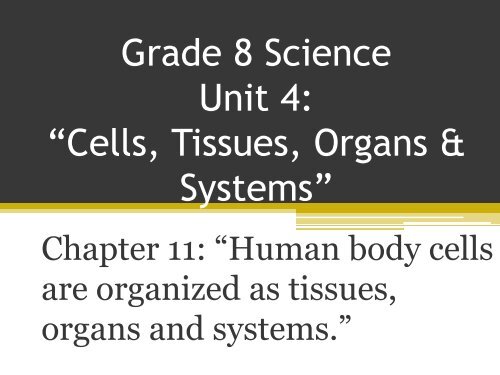
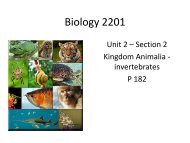
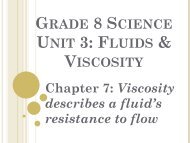
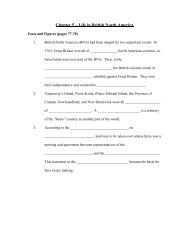
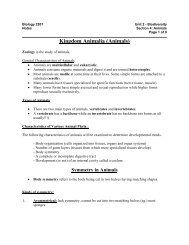
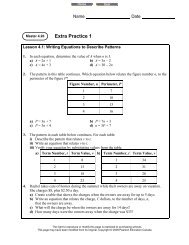
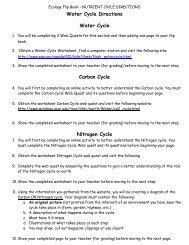
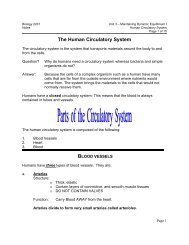

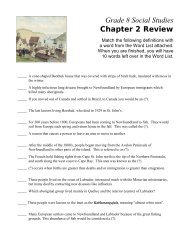



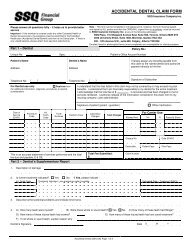
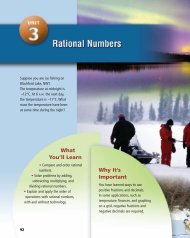
![Living Healthy Newsletter [Winter 2011]:Layout 1.qxd - Eastern Health](https://img.yumpu.com/35820360/1/190x245/living-healthy-newsletter-winter-2011layout-1qxd-eastern-health.jpg?quality=85)